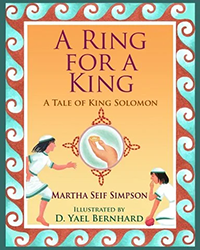This book provides a close reading of chapters eleven through twenty-five of Genesis, with a particular focus on the life of Abraham. Dr. Jonathan Grossman is the chair of the Bible department at Bar Ilan University and the author of several books on biblical narratives. Translating Genesis from the Hebrew, he offers a detailed literary analysis, using traditional commentaries and modern literary, philosophical, and political interpretations from Jewish and non-Jewish sources alike.
In the introduction, Grossman addresses the historical period in which Abraham lived, the structure of the book as a whole, and the birth of the nation of Israel, which the author understands to be the central theme of the Abraham narrative. A sizable portion of this chapter is devoted to unpacking the universalist and particularist themes present in Abraham’s election by God. Grossman also considers the relationship between nationalism and morality, concluding that the nationalism found in Abraham’s election is “presented as being contingent upon moral values of justice and righteousness … and is explored through pairs of narratives.” These narrative pairs are highlighted throughout Grossman’s assessment.
The Akedah, or the binding of Isaac, is recognized as the apex of Abraham’s encounters with God and the ultimate test of his faith. Grossman explores the nineteen verses of this narrative in detail, presenting both Jewish and Christian interpretations as background for his analysis. He suggests that the Akedah is best understood in relation to Abraham’s first test: leaving his father’s house to settle in Canaan. “In the first test, Abraham is asked to disengage from his past, while in the final test, he is asked to abandon his future.” Taken together, these tests demonstrate Abraham’s loyalty in full. Grossman also explores how the substitution of a ram for Isaac foreshadows the significance of animal sacrifice. The change in God’s name, from Elohim when God is seeking the sacrifice to YHVH when Abraham’s hand is withdrawn, signals a new intimacy between God and the Jewish people.
Abraham: The Story of a Journey traces the patriarch’s life from his separation from his father, Terah, to his separation from his son, Isaac. Grossman concludes by summarizing the structure of these narratives as two halves, one with a theme of national blessing and the other with a theme of moral blessing. Through these dual narratives, Abraham is “portrayed as a complex character who successfully established a nation committed to a covenant with God, while maintaining moral sensitivity by instructing his children and descendants to keep the way of the Lord by doing what is charitable and just.” Grossman’s analysis provides a vantage point from which to see these themes as part of an interconnected whole.





